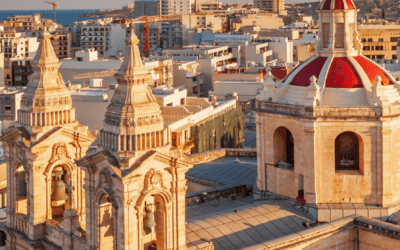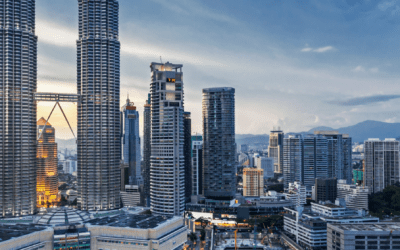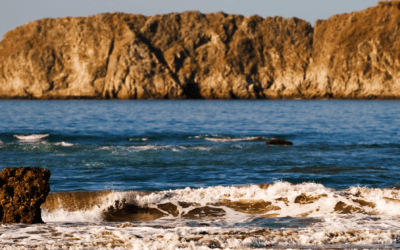Since I originally wrote this article in 2013, quite a bit has changed in terms of second residencies, immigration, and citizenship in Central and South America.
So, naturally, I’ve decided that it’s time to update this article with some of the latest developments in this region, and my research team, including my research and development associate Jovana Vojinović, and I have spent the past few months thoroughly researching all residence options in Central and South America.
The first thing that my team and I have decided to do is not limit ourselves to just five options. Countries in Central and South America are often some of the easiest places to immigrate to, but unlike Asia (which can also be quite easy), it’s a bit easier to be accepted into the culture and gain citizenship in Central and South America.
These countries also generally allow dual citizenship, and if you plan on having children, many Central and South American countries offer citizenship by birth.
From a cultural perspective, it’s also simply easier to fit into Latin America than in other parts of the world. While you’ll likely be accepted as Brazilian eventually, you’ll never be accepted as Malaysian or Cambodian.
The language barrier also isn’t too difficult to overcome since most Latin American countries speak Spanish. If you’re from the US, then you probably have some experience with Spanish, but if you don’t know the language, it’s an easy and useful language to learn.
That being said, Latin America isn’t perfect. It can be hierarchical, and if you’re a woman, it can be somewhat patriarchal.
Countries in Latin America are also typically highly bureaucratic. While expats tend to enjoy the relaxed pace of life here, it also applies to government processes, which can become frustrating at times.
That’s why my team and I created this guide to the best second residencies in Central and South America. From our research on the ground, we’ve learned the ins and outs.
What Makes Immigrating to Central and South America Difficult?
Despite having some of the easiest second residency programs in the world, immigrating to Latin America can be difficult at times – mostly thanks to good, old fashioned bureaucracy.
As we were researching these residency programs, we spent a lot of time tracking down lawyers and government officials to guide us through the process and clarify the laws. Unlike in most countries, bureaucrats in Central and South America tend to apply laws flexibly since regulations there change frequently.
For this reason, Latin American immigration is perhaps our largest R&D endeavor – navigating these bureaucracies is a lot harder if you don’t know what you’re doing.
On the other hand, immigration requirements are generally a bit easier. In many countries, Rentista programs allow you to establish residency by proving that you have a minimum monthly income, and Pensionado programs let you immigrate if you’re retired and have a monthly pension.
There are many different and easily-accessible options for investors, retirees, and other potential immigrants.
Despite this low barrier to entry, however, I see more rejections in Latin America. I see more bureaucracy, and the process is going to take longer than it would to get a residence permit in Malaysia or even to get a European Golden Visa.
There are exceptions to this, and your mileage may vary depending on your individual circumstances. Regardless, you really need to know what you’re doing.
Finally, one of the largest challenges that my team and I have encountered over the years is finding reliable people to work with. While we’ve managed to find the best of the best, it wasn’t exactly easy to do so.
Therefore, while second residencies in Central and South America are often easy in the sense that you don’t need to have hundreds of thousands of dollars to invest as you would in, say, Dominica, they can be difficult to get if you don’t know how to navigate bureaucracy.
A Note on Scams and Legality
When researching second residency programs in Latin America, one of the problems that you’ll run into is programs that are questionably legal at best and outright scams at worst.
My friend Christian with IMI Daily and I frequently talk about how there are so many different corrupt programs that come out of Latin America.
Latin America is unfortunately a very cheap place to get fake passports. There have been passport scandals even in Mexico, and I also found a joke of a program that claims it can get you a Bolivian passport in 14 days for $15,000.
One of the reasons why this is the case is because Latin America is so open, and getting a passport legitimately isn’t very hard.
For this reason, my team and I have carefully ensured that every program on this list is 100% legal and legitimate.
The Best Residency Programs in Central and South America
The following countries are the best second residencies in Central and South America.
For each country, I’ll give you a basic overview of the immigration process, but I’ll also provide my honest opinion on what the real scoop is on each country.
As Jovana and I have discovered on multiple occasions, the law doesn’t always match reality in many Latin American countries. For instance, the law may say they allow you to immigrate under certain provisions, but bureaucrats won’t let you do that because the law is going to change.
My goal here is to give you a real perspective on what really happens on the ground in each of these countries – not just theory and a few random people’s experiences from internet forums. My team and I have learned the culture and the lingo, allowing us to give you this important information.
Mexico

I’ve talked about Mexico a number of times here on the site and on my YouTube channel. There are interesting investment options available in the country and the location is fantastic for those who want to be close to family in the US. There’s incredible variety in Mexico. It has some of the best food in the world – from top-ranked restaurants in Mexico City down to the amazing street tacos – the people are incredibly warm and helpful, the shopping is fantastic, and the culture throughout the country is fascinating. In fact, Mexico City is one of my two favorite international cities in Latin American. You could spend years exploring just Mexico City and you still wouldn’t have seen and experienced everything this vibrant city has to offer, let alone the entire country. If you’ve never been, make sure you put Mexico on your list because it is also one of the easiest countries in the world to visit.
GETTING SECOND RESIDENCY IN MEXICO
What’s great about Mexico is that getting residency is a very straightforward and simple process. The first step is getting a temporary residence visa. These are available to anyone who plans on staying in the country for anywhere between 180 days to four years. You have a few different options for qualifying for this visa:
- Show proof of income of $2,500 every month for the past 6 months.
- Present records showing you’ve been invited to volunteer in the country for an organization or institution;
- Provide evidence that you’re related to a temporary/permanent resident;
- Submit documents that prove you’re married to a Mexican citizen.
A temporary resident visa is only granted for a one year period. If you reapply, you can renew that visa for up to three years at a time. You are not required to spend a certain amount of time each year in the country to maintain your visa. And you can enter and exit Mexico as many times as you’d like.
Residence through Real Estate
You can also qualify for residency by investing in Mexican real estate. As long as you can prove that you’ve made an investment of around $300,000, you will automatically qualify for residency. Note: The official investment amount is calculated by taking the Mexican minimum wage and multiplying it by 40,000 days of work. Because the minimum wage changes over time, the full investment amount will also change with Mexico’s economy and labor laws. Whatever the required amount may be, you will be able to find a nice place with your investment. With $200,000 you can purchase a modern, two- or three-bedroom apartment in Mexico City or a luxury home in the suburbs or other parts of the country. If you can prove this investment, you automatically qualify for a temporary residence visa and can begin the process of getting a permanent residency and even citizenship.
Residence through Investment
The last option is to make a combination of different investments in Mexico that could include real estate but can also involve businesses and stocks. Altogether, you’ll want around $100,000 in real estate and the same amount in a Mexican corporation. To qualify through investment, you need to provide sufficient documentation to prove you made those investments. You’ll also need to prove through the Mexican Social Security department that you’re employing at least three people. If you can do all of that, you automatically qualify for the temporary residence visa.
Qualifying for Permanent Residence
Permanent residence is granted to individuals who have the intention of living in Mexico on a long-term basis and who meet at least one of a few different qualifications. If you meet any of these qualifications, you can skip getting a temporary residency.
- You have a child, sibling, parent, or grandparent who is a permanent resident.
- You are pensioned or retired and can provide adequate monthly income through investments, savings, or pensions.
- You are seeking political asylum.
- You are an unmarried minor with a Mexican father or mother.
If none of these apply to you, you’ll need to apply for temporary residency first and keep it for four consecutive years (two years if you’re married to a Mexican citizen) before applying for permanent residence. Mexico uses a point system to approve permanent residence applications. The criteria this point system uses was crafted to attract foreign investors and individuals with expertise. It includes your education, work experience, international awards, investment in the country, Spanish language proficiency, and a knowledge of Mexican culture.
Can I get a Mexican Passport?
Obtaining a Mexican passport might not be the best option for everyone, but there are some situations where it can be very beneficial. Unless you have relatives that are Mexican citizens, you’re going to have to go through the naturalization process. This shouldn’t be daunting. Naturalization is a very straightforward process that only requires five years of residency. Whether you have a temporary or permanent residence does not matter, just that you have had resident status for a total of five years. This can be a great option for someone running a manufacturing business with American customers or for a digital nomad looking to get out of the US without getting too far away from family. It isn’t a good idea for someone looking to build out a passport portfolio. While you can become a dual citizen in Mexico, the country does not allow multiple citizenships beyond two. Mexico is a call option residence. You can get and keep a temporary residence there without spending any time in the country during the first few years. During that time, you can explore other options and consider if Mexico works for your nomadic strategy. You don’t have to spend a huge chunk of time upfront to make it work as you would in a country like Chile.
Nicaragua
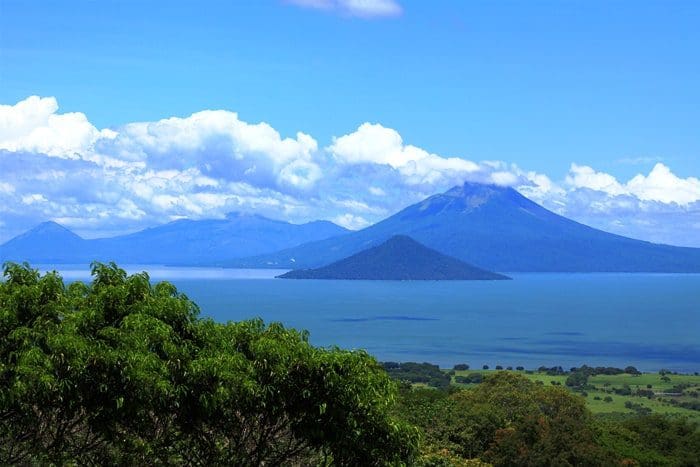
If you’re looking for a low cost of living with an outstanding quality of life, head to Nicaragua. This Central American country is one of the safest and most scenic countries in Latin America, but unlike its more expensive neighbor, Costa Rica, you can live there for remarkably little money. In fact, hiring a full-time housekeeper will only cost you slightly over $100 per month. Getting a second residency in Nicaragua can, therefore, be a great way to lower your cost of living while enhancing your quality of life. And, luckily, getting your residence permit there isn’t too difficult.
GETTING SECOND RESIDENCY IN NICARAGUA
The process for getting your residence permit in Nicaragua is quite simple. And there are options for getting a second residence without an investment, making Nicaragua one of the easier places on this list to establish residency. In general, there are three ways that people commonly qualify for Nicaraguan residency. First, retirees who receive a public or foreign pension of $600 or more per month can qualify for Nicaraguan residency. If you’re not retired, a second option is to qualify as a financier by proving that you have a foreign income of $750 per month (plus $150 for each dependent). Or, your third option is to invest $30,000 in an employment-generating business (creating 15 new jobs) or in land. For the most part, these criteria are straightforward and are enforced uniformly, but people occasionally run into trouble when applying for the financier residence permit since what qualifies as foreign income can be up to interpretation. For example, while an investment account or annuity that pays $750 per month will surely qualify, running a remote business might not count in the eyes of all Nicaraguan officials. Once you’ve determined whether you can qualify for residency under one of those categories, you must then travel to Nicaragua to apply for your residence permit. You must remain in Nicaragua for 30 days after you submit your application. For your application, you will need to fill out all the paperwork that Nicaraguan immigration requires for your particular type of residence permit, such as a formal application and health assessment. You will also need other documents like an apostilled copy of your birth certificate. When you complete your application, we highly recommend hiring a trusted local lawyer to assist with the process and speak directly with local officials.
CAN I BECOME A NICARAGUAN CITIZEN?
If you get your Nicaraguan residence permit, then yes, you can apply for citizenship after five years of staying in the country. However, as in most Latin American countries, the naturalization process can be tediously bureaucratic. You’ll need to work with a high-quality immigration lawyer and you’ll need to be prepared to wait for months or years to actually get your passport. What makes getting citizenship in Nicaragua potentially interesting but also challenging is that, right now, the government is not enforcing the requirement to spend half your year there. The question you need to be thinking about and working with your immigration lawyer on is if that situation will change.
RESIDENCY REQUIREMENTS
Once you become a resident of Nicaragua, maintaining your residency is rather easy – if you’re willing to live there. While you don’t need to renew your residence permit once you have it, you will need to stay in the country for six months out of the year to maintain it. That’s the main reason why becoming a resident of Nicaragua isn’t always the best option for the kinds of people I work with. If you have a variety of business interests around the world, then it can be hard to make sure that you spend over 180 days per year in one location. However, if you’re a digital nomad or entrepreneur who’s just starting to build their business, then becoming a resident of Nicaragua might not be the worst idea as it will allow you to live well while maximizing your money.
Costa Rica
Costa Rica’s national motto is pura vida, which translates to “pure life,” and that’s exactly what you’ll find in this gorgeous Central American country. Thanks to its stunning scenery and friendly locals, Costa Rica has attracted nomads and expats from all over the world.
Although certain Costa Rican cities have a bit of a bad reputation as party towns, this country is one of the safest in Central America, and thanks to its popularity as a tourist destination, it has good health care and transportation.
It’s not as cheap as some of the other countries on this list, but you can live well in Costa Rica for a fraction of the cost of living in major cities like New York or Los Angeles.
In general, Costa Rican residency can be a good option for people who want a second residency with minimal physical presence requirements, a second residency with great health care benefits, or a second residency with the possibility of citizenship.
How to Become a Costa Rican Resident
The two most effective options for becoming a Costa Rican resident are the Rentista option or the Investment option.
For the Rentista visa, you’ll need to provide bank statements that prove you consistently make at least $2,500 in income per month from your employment, self-employment, or other sources. You also have the option of depositing $60,000 in a Costa Rican bank, or you can create a $60,000 fixed account with a statement that you will receive $2,500 from that account each month.

The Investor visa, on the other hand, requires you to invest $200,000 in Costa Rican real estate, stocks, or businesses.
If you fit into either of those categories, you can then begin the process of gathering your documents and applying for residency.
Before you begin your application, you’ll first need to gather thirteen different documents. These include a police report from your country of residence for the past three years, an apostilled birth certificate, an apostilled marriage certificate, and (if using the Rentista option) bank statements from the past twelve months.
Once you have gathered the required documents, you may then apply for a temporary residency. That application process may take up to six months to complete, but once your application is approved, you will then begin your two-year period of temporary residency.
After your first two years, you may then renew your temporary residency, and you must then wait one more year to apply for permanent residence.
Residency Requirements for Costa Rica
One of the largest benefits to becoming a Costa Rican resident is that maintaining your residency there is rather simple.
You only need to spend one day in the country per year to maintain your temporary residency, and once you have permanent residence, you only need to return once every four years.
The only major requirement for Costa Rican residency is that all residents under the age of 55 must maintain national health and retirement insurance, which costs roughly $230 per month. However, this health insurance covers all public health expenses, which can be helpful in cases when you need catastrophic coverage.
Citizenship in Costa Rica
Like most Latin American countries, it is possible to become a Costa Rican citizen after a period of residency.
In Costa Rica, you will need to wait seven years to apply for citizenship after becoming a resident. However, during those seven years, you must remain in Costa Rica for at least 183 days out of each year.
While Costa Rica is fairly true to its word as far as the seven-year requirement goes, it’s fairly strict about the 183-day residency requirement. Therefore, while citizenship is a possibility in Costa Rica, you will need to be willing to actually live there to get it.
Panama
If you’re looking for a second residency with minimal physical presence requirements in a business-friendly jurisdiction, look no further than Panama.
Although the hype over the Panama Papers might tell you otherwise, Panama is a high-quality banking and business jurisdiction, and it’s also a tax-friendly second residency with its territorial tax system.
Panama is also a great option if you want to live in Central America with all of the conveniences that you have at home. It has most Western amenities that you’re used to, and it’s relatively well-connected to other parts of the world.
Panama also has an incredibly low cost of living, and it’s quite possible to enjoy big city living in Panama City for as little as $1,500 per month.
Out of all of the countries on this list, Panama perhaps offers the largest variety of residency options. The easiest option for Panamanian residency is the Friendly Nations Visa, but if you’re not from a qualifying country, then you still have other options as well.
The Panama Friendly Nations Visa
Most Westerners can use Panama’s Friendly Nations Visa to become a Panamanian resident.
To be eligible to apply for the Friendly Nations Visa, you must be able to deposit $5,000 in a Panamanian bank account, and you must also have an economic tie to the country. The easiest way to do this is to start a company there, but you can also choose other options, such as investing in Panamanian businesses.
If you’re married or have children, you’ll need to deposit an extra $2,000 per dependent.
From there, the process for applying for a Friendly Nations Visa is quite simple. Once you complete the financial requirements and gather your required documents, you’ll be all set for your Panamanian residency.
Additionally, under this program, physical presence requirements are quite minimal. Like Costa Rica, you’ll only need to spend a day in the country per year to keep your residence permit.
The problem with the Friendly Nations Visa is that it’s only available to citizens of 50 different countries, which include most EU countries, major Asian economies like Taiwan and South Korea, and, of course, the US.
If you’re like me and do not have citizenship in one of these countries, then you will not be eligible for this visa.
Additionally, if you plan to renounce your US citizenship, you may not be able to keep your Friendly Nations Visa after you renounce – unless you choose to get Panamanian citizenship.

Reforestation Investor Visa
If you don’t qualify for Panama’s Friendly Nations Visa, then you can also qualify for Panamanian residency through the Reforestation Investor Visa.
To be eligible for this visa, you must invest a minimum of $80,000 to purchase 5 hectares of a certified reforestation project. Like the Friendly Nations Visa, you will need to invest $2,000 more per dependent.
Once you have made your investment, obtaining your visa and permanent residency is quite straightforward.
Personally, I’m a big fan of this visa. Not only is investing in forestry financially savvy, but it also contributes to the environment. I’m an environmentalist at heart, and in my view, investing in forestry is a great way to give back to the planet while getting an easy second residency.
Other Panamanian Residency Visas
If neither the Friendly Nations nor Reforestation visas works for you, then there are a handful of other options that you can choose from to become a Panamanian resident.
The Pensionado Visa allows foreigners with a guaranteed lifetime pension of $1,000 per month to become Panamanian residents. While you must prove that your pension income is for life, you can obtain permanent residency rather easily this way, and you can even get a variety of discounts on airline tickets, hospital bills, and other expenses with this visa.
Panama’s Self Economic Solvency Visa is similar to a standard investor visa in that you must invest $300,000 in a Panamanian term deposit account, real estate, or a combination of the two. Procedures for applying for this visa are similar to the Friendly Nations Visa. You can also invest $160,000 into a Panamanian business to obtain a Business Investor Visa.
If you only desire temporary residence, then you can invest $60,000 into an agricultural business to obtain a visa through the Panama Agricultural Investor Program.
If you need help deciding which Panama residency option is best for you, click here.
Can I Get Panamanian Citizenship?
Although obtaining residency in Panama is rather easy, citizenship is a different story.
Technically, you can get citizenship in Panama after being a resident for five years if you spend the majority of your time there. However, I’ve known people who have been there for fifteen years who have still not gotten Panamanian citizenship.
Additionally, if you value having a second passport portfolio, then Panama might not be the best option for you. Panama does not allow dual citizenship, so you would need to give up your other nationalities in order to become a Panamanian citizen.
Honduras
Of the Central American countries on this list, Honduras tends to fly under the radar.
While the country has a bit of a bad reputation internationally, there are plenty of excellent places to live in the country, and you’ll be able to enjoy breathtaking beaches for a fraction of the cost that you’d pay in Miami or even Costa Rica.
Obtaining residency in Honduras is also relatively simple. Most people will qualify for Honduran residency through three different visa types – Rentist, Retiree, or Investor.
For all visa types, you will first need to enter the country on a tourist visa, and you will need a Honduran lawyer to represent you during the application process.
The Honduran Rentista Visa
In order to qualify for the Honduran Rentista visa, you will need to show proof that you have an income of at least $2,500 from outside of Honduras.
Unlike similar Rentista programs in Central America, this income cannot be from employment or self-employment. Instead, it must be from a more passive source like rental income or savings.
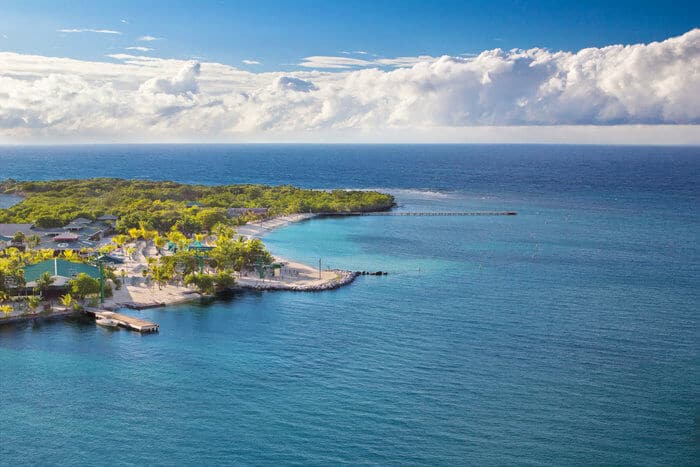
If you meet that qualification, then you may hire a Honduran lawyer to begin the residency process. Because finding a good lawyer in Central America can be tricky, we recommend using a consultation service as well.
Honduran Retirement Visa
If you can prove that you have a lifetime pension income of at least $1,500 per month, then you are eligible for the Honduran Retiree Visa.
To apply for a retiree visa, you will need to provide certified proof of that monthly income as well as standard residency documentation, including a police report from your current country of residence and a medical examination.
Like all other visa types, you will need a Honduran lawyer to represent you during the application process.
Honduran Investor Visas
You can also become a resident of Honduras by investing $50,000 into Honduran real estate or a Honduran business and by making a $5,000 deposit into the central bank.
This process is a bit more complicated than the other Honduran residency options. You will begin by entering the country on a tourist visa and opening a bank account, but you will then need to incorporate a business in Honduras. While no physical presence is required to open the company, you will need to make a $5,000 deposit in a Honduran bank to demonstrate ties to the country.
You will also need to obtain a Honduran business license to operate legally within the country, and you will need to renew that business license each year.
Finally, when you apply for Honduran residency by investment, at least half of your investment will need to be paid into the company. You will, however, need to provide a timeline for the rest of your investment along with your standard application paperwork.
Getting Honduran Citizenship
Once you have become a Honduran permanent resident, you must wait five years to apply for citizenship. To be eligible, you will need to have spent the majority of your time in the country during those five years.
Just as you need to obtain a good lawyer to get through the Honduran residency process, you will also need one to apply for citizenship.
Additionally, if you wish to obtain Honduran citizenship, you may be able to expedite the process in three ways. First, if you were born in Central America, then you can generally get Honduran citizenship after residing in the country for one or two years. You can also become eligible immediately if you become married to a Honduran citizen by birth or if you have provided “extraordinary service” to Honduras.
Colombia
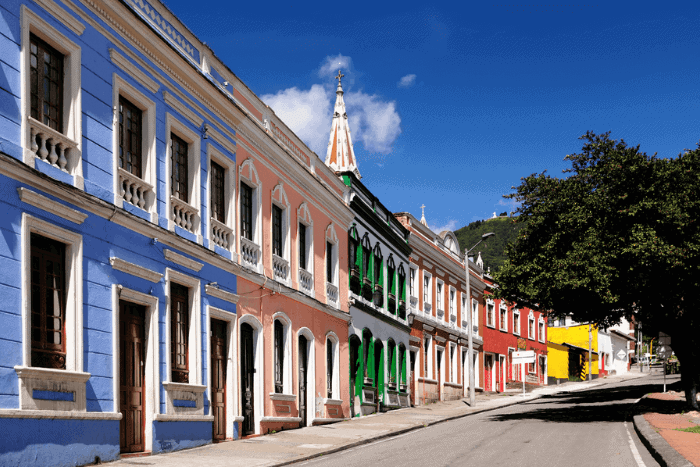
Thanks to its stunning scenery, growing economy, and openness to foreigners, Colombia has become an increasingly popular destination for digital nomads, investors, and Nomad Capitalists alike. Living in Colombia is incredibly cheap, which can make it an ideal place for people who are just starting to build their businesses. However, taxes can be quite high, so you should keep that in mind if you’re looking for somewhere to live permanently. As a result of this new influx of foreigners, Colombia has overhauled and renamed its residency programs. For our purposes, there are two primary options for Colombian residency: the fast track and the slow track. It’s worth taking into account that the prices for each track are indexed to inflation. They can and will change.
COLOMBIAN FAST-TRACK PERMANENT RESIDENCY
To get immediate permanent residency in Colombia, you can invest $165,000 in real estate or a corporation. This can be an individual investment, or you can make it in conjunction with someone else. While this option will give you immediate permanent residency, the application can be more difficult to complete. However, it does give you the option to apply for citizenship in five years.
COLOMBIAN SLOW-TRACK RESIDENCY
If you don’t want to invest $165,000 in a Colombian business or real estate, then you can use the slow-track option to obtain temporary residency. This option can also lead to permanent residence and citizenship. For the slow track, you can get a business visa that doesn’t have a minimum initial investment requirement. You’ll likely need to invest $23,000 at some point, but if you have something like intellectual property that you can prove is worth that much, then you can theoretically invest nothing to get temporary residence. However, while you don’t need to make the $23,000 investment immediately, Colombian immigration has upped enforcement of business activity requirements. This means that you need to demonstrate six months of business activity – meaning money in and money out – in order to maintain your residence permit’s validity. This is where things can be a bit of a hassle. Colombia isn’t the best country to run a business in, but if you can move money around for a while and eventually put in $23,000, then you can get residency there rather easily. After you’ve maintained that temporary residence permit for five years, you can then apply for permanent residency. However, to get permanent residence, you’ll need to spend a good amount of time in the country. While Colombia isn’t too specific about what this requirement is, spending a single day in the country each year is not going to be enough.
GETTING COLOMBIAN CITIZENSHIP
Like many of the countries on this list, getting residency in Colombia isn’t too difficult, but citizenship is a different story. To be eligible for Colombian citizenship, you’ll need to have been a permanent resident for five years. If you choose the fast-track option, then you’ll need to wait for five years, but if you choose the slow-track, you’ll need to wait at least ten. You’ll also need to spend the majority of your time in Colombia in order to qualify for citizenship. While this can be beneficial in some ways – namely, cost of living – it also means that you’ll be dragged into Colombia’s tax net, which can be a bear to deal with. But if you’re following my trifecta strategy and living in several different places, I think Colombia is a great option in Latin America.
Peru
Peru provides an interesting option for people seeking a second residency in South America.
Between its beautiful coastline, awe-inspiring Andean highlands, and fascinating rainforests, Peru is filled with stunning views and plenty of outdoor adventures to be had. It also offers plenty of amenities for a remarkably low cost of living.
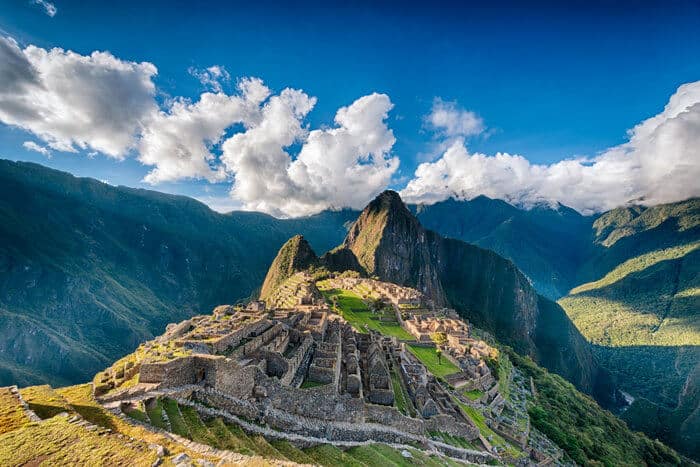
Getting residency in Peru, however, can sometimes challenge our definition of easy. While becoming a Peruvian resident isn’t actually all that difficult, navigating the process can be hard thanks to all of the misinformation that abounds on the internet.
That’s why my research team and I have spent plenty of time on the ground here to give you the real deal on how to get Peruvian residency. We want you to know the difference between what’s technically true and what actually happens when you apply to become a Peruvian resident.
In general, there are three ways to become a Peruvian resident – investment, Rentista, and retirement.
Peruvian Residency by Investment
Most of the misinformation about Peruvian residency comes into play with the Peruvian Investor Visa.
If you perform a cursory search on the internet, then becoming a Peruvian resident by investment seems easy. Based on what all of these random blogs have to say, all you need to do is invest $30,000 into a Peruvian business.
Seems easy enough, right?
Unfortunately, that’s not correct. Based on my team and I’s on-the-ground research in Peru, you actually need to invest five times as much money – $150,000 – in order to even be considered for Peruvian residency by investment.
In addition, you’ll also need to create five jobs along with your investment, and in your application, you will need to outline those five jobs in a business plan.
Therefore, while obtaining residency by investment in Peru is similar to getting residency by investment in other countries, you need to know the real facts before digging into the process. Otherwise, you might end up flushing $30,000 down the drain.
The Peruvian Rentista Visa
If you don’t have $150,000 to invest in a Peruvian business, then you can also obtain Peruvian residency through the country’s Rentista program.
To qualify under the Rentista visa, you will need to prove that you have an income of no less than $1,000 per month. While this is easy enough for most Nomad Capitalists, you need to keep in mind that Peru’s Rentista program is similar to Honduras’ in that the income must be from a non-employment source, such as an annuity or rental income.
However, if you do have non-employment income of over $1,000 per month, then this process is relatively easy.
Retiree Visas
Like the Rentista visa, you may obtain a retirement visa if you can prove that you have a permanent income from a pension or other source of over $1,000 per month.
The primary difference between this option and the Rentista option is that the retirement visa is more meant for older people who have a pension or other permanent source of income. Therefore, this visa is a bit easier to get approval for, but it’s also harder to qualify for since it’s geared toward a specific population.
Immigrant Visa
Once you have resided in Peru for three years, you have the option to get an Immigrant Visa if you do not want to get Peruvian citizenship.
This visa establishes long-term residency in Peru, so you will not have to renew your visa as often. However, since you will still be a foreigner, you will still need to pay foreigner’s taxes while you are in Peru.
Peruvian Citizenship
Of all of the countries on this list, you can get citizenship in Peru the fastest. In fact, you can apply for a Peruvian passport after just two years of residence.
However, in order to qualify, you will also have to spend no less than 183 days in the country per year, which can have some tax consequences. While you may be able to reduce your Peruvian tax burden with some degree of planning, it’s not exactly a tax-friendly second passport.
You will also need to complete a language and history test in Spanish to qualify for Peruvian citizenship, and you will need to have a clean criminal record as well.
Therefore, while getting a Peruvian passport is a bit more doable than, say, a Panamanian one, it might not be worthwhile due to the residency, language, and tax requirements.
Argentina
Argentina also presents an interesting option for people seeking second residency and citizenship in South America. The country has a bit of a fiery history to the point where some call it the Thailand of Latin America.
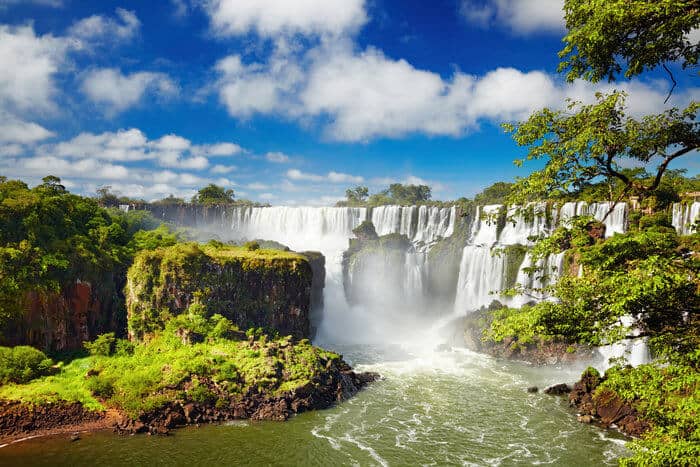
However, despite its political instability, Argentina has emerged as a powerful regional player with a strong passport and growing economy.
Argentina is also a large country, which is one of the reasons why I like it. There’s a lot of regional diversity, so like Mexico, it’s a lot easier to find somewhere that you would actually like to live there.
It’s also relatively simple to get residency there, and in some cases, you may be able to become an Argentine citizen in as little as two years.
Becoming a Resident of Argentina
Like most countries on this list, you can become a resident of Argentina if you can prove that you earn a minimum monthly income of $2,000 or more.
While you may be able to qualify if that income is from employment or self-employment, the Argentine government tends to favor applicants with non-salary income sources. Additionally, this income will need to be deposited into an Argentine bank account.
Similarly, you can also become an Argentine resident through a retiree visa meant for older persons with a pension or other guaranteed income of above $2,000 per month.
Once you have obtained temporary residency through either of these means, you can then apply for permanent residency in two years.
Getting an Argentine Passport
After being a resident of Argentina for two years, it’s then possible to apply for citizenship.
Like most Latin American countries, you will need to have spent a substantial amount of time there during those two years. However, in this case, you can sometimes argue that you have a compelling case to spend less than 180 days in the country.
So, theoretically, if you want to follow my trifecta approach and establish Argentina as one of your bases, you can hire a professional to argue that you can only spend three to four months per year in the country and still be eligible for citizenship.
From there, the process for applying for citizenship is similar to that in other Latin American countries. You’ll need to take tests in Spanish, and you’ll likely need to hire a professional to help you navigate the process.
One interesting thing about this passport is that you cannot technically renounce it, which is something to keep in mind if you do decide to apply for Argentine citizenship.
Additionally, since Argentina has had its share of financial problems, the possibility of citizenship-based taxation is something that you may want to account for as well. And, unlike the US, you may not be able to get out by renouncing your passport.
However, despite these drawbacks, getting an Argentine passport is beneficial simply because it’s a country that you might want to actually live in with your second passport. Unlike some of the Caribbean countries, which are incredibly small, Argentina is large and livable, making it a good backup plan if you ever need to go there.
Chile
With its stunning mountains and low cost of living, Chile is certainly an attractive option for getting an easy second residency in South America.
In fact, it has one of the highest standards of living in Latin America, and it’s even part of the US visa waiver program. This makes it an attractive alternative for US citizens who are looking to renounce but want to go back to the US on occasion.
Before we dive too deep into Chile’s residency programs, however, keep in mind that the targets are constantly moving in the world of second residency and citizenship.
Due to all of the madness with Venezuelans fleeing their home country, the Chilean Parliament has discussed tightening its immigration rules, so we’ll do our best to keep this article updated with any changes to Chilean immigration law.
Becoming a Chilean Resident
Unlike just about every other country on this list, Chile has no formal minimum requirement to establish residency.
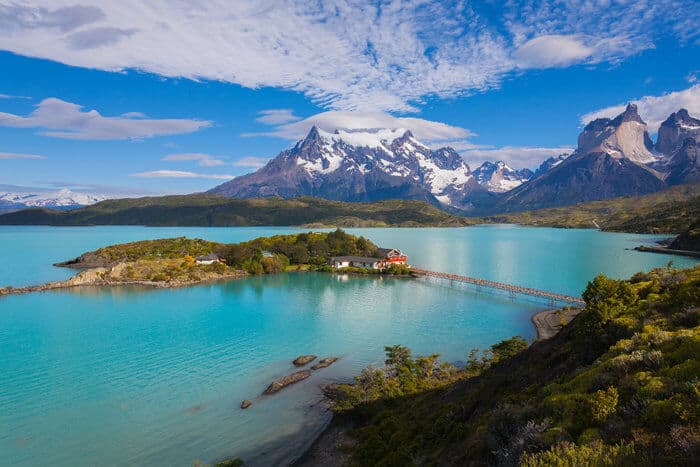
Depending on where you’re from or what your income is, this could be a good thing or a bad thing for you.
If you’re from a country like the US or Australia, then this certainly works in your favor. However, if you’re from somewhere like Saudi Arabia or Indonesia, this may end up working against you.
Unfortunately, since immigration decisions are often left to officials’ discretion here, nationality does play a role in immigration decisions.
Additionally, while there’s no formal minimum income requirement in Chile, you should probably be making at least $1,500 per month to apply for residency. But again, whether this will be sufficient is up to immigration officials’ discretion.
Because the immigration process in Chile is so reliant n the discretion of immigration officials, I highly recommend hiring a local lawyer to help you through the process.
Getting a Chilean Passport
Like Argentina, one of the most attractive aspects of becoming a Chilean resident is the prospect of getting a Chilean passport.
As I’ve mentioned in other articles, one important factor to consider with any second passport is whether or not you would want to actually live there if things went belly-up in your country of residence. Chile, thankfully, is a highly livable country with most of the comforts that you’re used to at home, making it an attractive option for second residency and citizenship.
A Chilean passport, however, is even more attractive than an Argentine one due to the fact that it can get you into the US under the visa waiver program. Chileans also have visa-free access to a variety of other countries, including Russia.
Obtaining a Chilean passport is also fairly straightforward. After you have held Chilean residency for five years, you may then begin the application process.
For the most part, the application process is similar to what you’ll find in other advanced countries. You’ll need to provide more documents and complete an interview, and you’ll likely wait at least two years for your application to be approved.
Because so much in Chile is left to the discretion of bureaucrats, you’ll likely want to hire a reliable lawyer to help you with this process.
Ecuador
Ecuador is yet another up-and-coming Latin American country that offers relatively simple options for obtaining residency. One of the most appealing aspects of Ecuador is its astronomically low cost of living. Like Nicaragua, you can have a full-service maid, cook, and even driver for a fraction of the cost you would pay at home. Ecuador is also one of the safest countries in Latin America and it’s relatively well-connected to the rest of the world. It also offers potential immigrants plenty of residence options and a path to citizenship, making it an excellent option for those looking for a great second residency in Latin America.
ECUADORIAN RESIDENCY BY INVESTMENT
The most common way to get an Ecuadorian residence permit is by obtaining residency by investment. To be eligible for this permit, you will need to be able to invest $26,250 into an Ecuadorian company or into a business that you start yourself. Or, you must invest $30,000 into qualifying real estate or land. Once you have made your investment, you may then apply for a two-year temporary residence permit. To do so, you will need to enter the country on a tourist visa and provide documentation of your investment as well as standard documents like a police report from your country of residence and an apostilled copy of your birth certificate. One of the largest benefits of getting residence by investment in Ecuador is the fact that there is no physical presence requirement for maintaining your residency. However, you will likely need to stay in the country for the majority of the year if you wish to apply for citizenship.
RETIREE VISAS
If you have a pension or similar form of retirement income, then you can qualify for an Ecuadorian Retirement Visa. Unlike other retirement visas on this list, there’s no monthly income minimum to be eligible to apply. However, as a general rule, you want to be bringing in at least four figures of income per month. Like the Investor Visa, this visa will only be valid for two years, but you will need to remain in the country for at least six months per year to maintain your residency.
CAN I GET AN ECUADORIAN PASSPORT?
After two years of temporary residency and one year of permanent residency, you will be able to apply for Ecuadorian citizenship by naturalization. If you’re a westerner, this passport does come with the opportunity for visa-free travel to Russia. It’s definitely a passport to consider as a good alternative passport for that reason. However, one issue to keep in mind if you want to apply for Ecuadorian citizenship is that you will become an Ecuadorian tax resident in the process. Because you will need to stay in Ecuador for more than 183 days per year to maintain your residency (or be eligible for naturalization), you will need to pay Ecuadorian tax on your worldwide income. If you pay tax on that income in other jurisdictions, you may be able to exempt it, but Ecuador does not allow you to exempt income earned in low- or no-tax jurisdictions. Therefore, while the process for getting Ecuadorian citizenship is straightforward, you will need to consider how it may impact your tax strategy.
Paraguay
Paraguay is an attractive option for second residency and citizenship for many reasons.
It’s part of the Mercosur trading bloc, which gives you access to numerous South American countries; it isn’t a part of CRS; and it’s one of the fastest places to get citizenship in the world.
In fact, if I had a nickel for every comment and email that I’ve received about Paraguayan residency and citizenship, I’d likely have enough money to establish residency there with that alone.
However, while Paraguayan residency seems easy on paper, the letter of the law doesn’t always reflect reality in this part of the world. Legal services in Paraguay are also poor, so we recommend using a trusted source for legal recommendations in Paraguay.
So, let’s take a closer look at how getting residency and citizenship in Paraguay actually works.
Becoming a Resident of Paraguay
The reason why Paraguayan residency appeals to so many foreigners is that the process for obtaining it is cheap and simple.
To be eligible to become a resident of Paraguay, you wimply need to be able to deposit $5,000 in a Paraguayan bank account or buy an equivalent amount in real estate.
From there, the process for obtaining and maintaining your residency is rather simple. You fill out the required forms and provide required documentation, and you should be all set with your residence permit.

The largest benefit of Paraguayan residency is the fact that its physical presence requirements are minimal. Even if you’re only there for a handful of days, you should still be able to easily renew your residence permit when you need to.
Becoming a Paraguayan Citizen
While getting residency in Paraguay is fairly simple, becoming a citizen is another story.
Technically, if you live full-time in Paraguay for three years on your residence permit, you are eligible to apply for citizenship.
As in many of these countries, however, what the letter of the law says doesn’t always happen in the real world. I’ve known plenty of people who have applied for Paraguayan citizenship after their three years of residency only to find that it takes years upon years to actually get their passports – if they even get them at all.
Additionally, legal services in Paraguay are poor, and scams are prevalent. Navigating the process can therefore be quite complicated, and finding someone to navigate it for you can be near-impossible.
For this reason, I tend to discourage people from Paraguayan citizenship. Although we have Paraguayan legal services on-hand if you do want to go this route, there are much better passports that you can get than Paraguay’s for the amount of time and effort that you will invest here.








